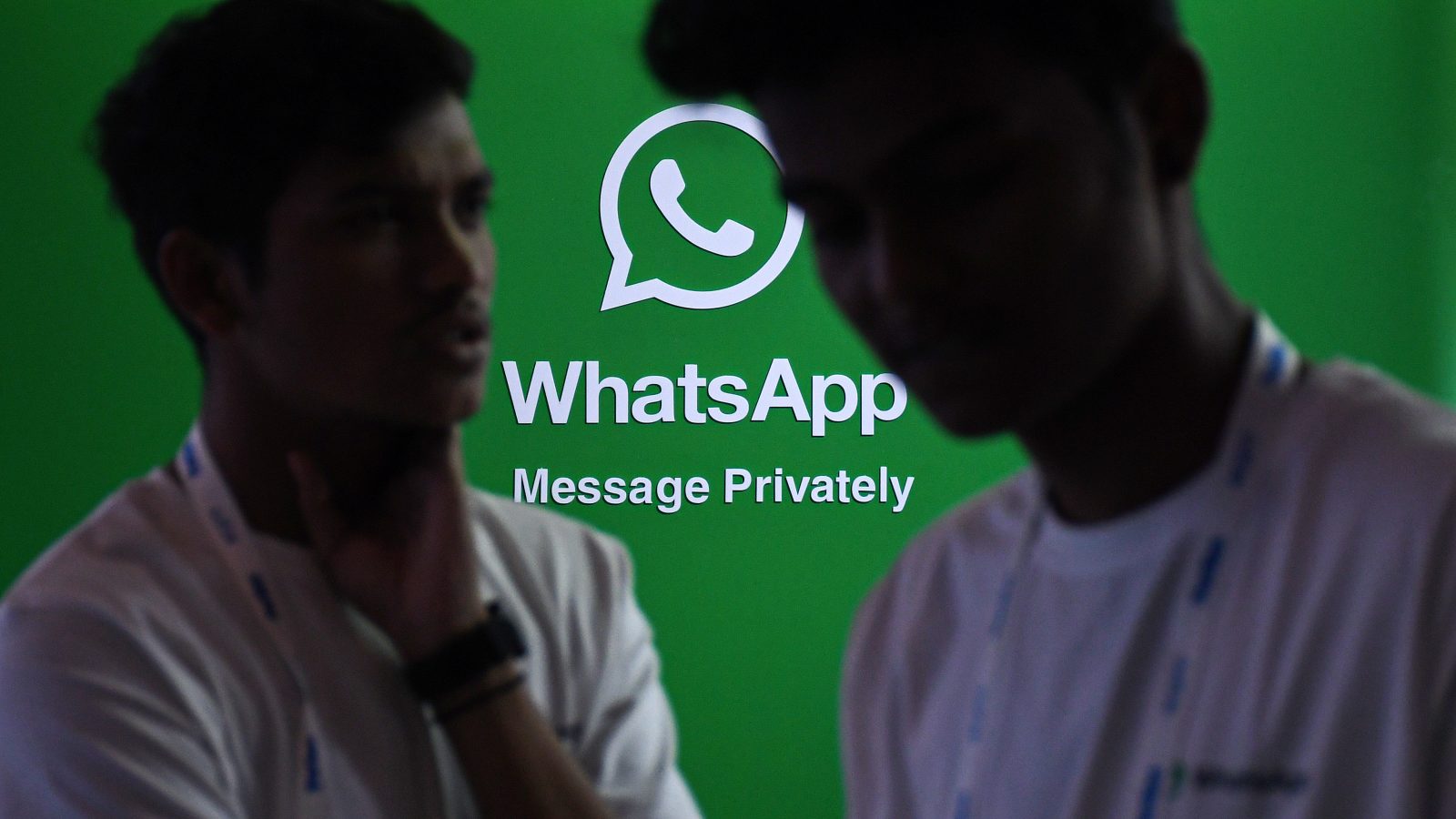- That's so Meta
- Posts
- Meta Hiring Trends, Indian Market, WhatsApp
Meta Hiring Trends, Indian Market, WhatsApp
Palmer Luckey, Meta Hiring trends, Indian ecosystem quick review

Ahoy Metamates! 🚢 🏴☠️
🆕 The TLDR This Week
Dramatic Drama Ensues on X
Boz v Palmer Luckey was fairly epic on X this week - it opens up the larger question of whether conservatives / libertarians/ whatever the kosher thing to say nowadays for Trump voters is are welcome to work in tech.
If the truth actually backs up what you say about me and why I was fired, let's make everything public and let people judge for themselves. You are the CTO of Meta, a trillion dollar corporation. This is fully within your power, not some peon decision.
Just say the word. twitter.com/i/web/status/1…
— Palmer Luckey (@PalmerLuckey)
11:10 PM • Apr 13, 2024
For context:
Palmer Luckey is the founder of Occulus VR, which Meta bought
He was famously ousted from Meta in 2017
Allegedly, this had to with him endorsing conservative politics
The showdown on X blames Boz for taking credit for Palmer’s work after he left ( at least somewhat between the lines)
There seems to be some legal agreement in place preventing either one of them of speaking about what actually happened
While Meta make a public statement in 2018 about Palmer’s firing having nothing to do with politics, this recent thread puts that into serious question - to say the very least. And, reinforcements came from John Carmack, one of the key players in the game space, and formerly a consulting CTO at Meta.
More context on Luckey’s firing here:
Zooming out, conservatives in general are not common in tech - accounting for a a minority of political donations, with the highest concentration in big tech being Amazon, Meta, Qualcomm and old school companies like Intel and Oracle. A Blind poll shows that their opinions are generally not welcome:

Observations Around Recent Hiring
Much more hiring happening in Canada, esp Toronto
New effort focusing on ecommerce partnerships in Korea ( likely Coupang et al)
Hiring around Twisted Pixels, Unity editors/ BigBox and Project Aria (glasses)
After a departure of key talent last year, Digital Human team hiring for avatars again in multiple roles
“Youth” is getting a dedicated General Counsel
Lots of meterial scientist hiring around semi-crystalline polymers
Meta is now focusing on human inspired AI and hiring PhD researchers
The Battle For India

It’s not a secret that Meta circa 2017 had a whole building dedicated to “ connecting the last billion” people to the internet - specifically, those in India. This has been a long-time effort and while only 43% of the country has internet access, it was still capital well spent for Meta:
31% of people in India use Facebook as their main social platform
That’s ~ 448M people (source)
Indians, on average, spend about 141.6 minutes on social media daily
Other incumbents are Snap, Linkedin and Youtube
Why no TikTok?
Actually, it’s not just TokTok - you can’t get any Chinese owned app in India. That includes Shein and WeChat as well. All due to a border dispute that led to a complete ban in 2020.
India has a very unique view on social media in general - for one, the government has blanket power to regulate social media. But also, there are some idiosyncrasies in how platforms are used:
Avatars/ people’s photos on facebook are much smaller and blocking capability is more intense, chiefly to reduce instances of men harassing women online ( shared by Meta employee)
News on social media is regarded as a source of truth - 54% of Indians log on to find information they consider “truthful” ( source)
Voice and vernacular search is more popular than in the US (source)
Bain predicts ecommerse will grow from $1.5-2Bto $16-20B in ‘25
TLDR: India is poised to become the largest market for advertising outside of China in the next 10 years, and growing at a much faster rate.
We’re still in the very early innings here:

Source: OOSGA 2023
Snap In India is for Gen Z
Snap may be semi-dead in the US, but that’s not the case in India - they’ve doubled users YoY to 200M ( ~half of Meta). They’ve hired key Meta talent in the region:
Saket Jha Saurabh just joined Snap from Meta
Ajit Mohan is now head of APAC for Snap
Pulkit Truvedi from Google Pay to lead commercial efforts
Snap India is mainly aimed at younger, GenZ consumers. This is a unique differentiator since WhatsApp / Facebook / Innstagram in India are much more stratified across the age spectrum.
We have a young audience…Gen Z is there on Snapchat. When you talk to businesses, one of the key asks is how do you talk to young India. At the end of the day, everybody is talking to the same audience through other platforms. Snapchat is uniquely placed to let you talk to young India

Some quick stats:
200B users on Snap in India
Snap estimated the digital advertising market there @ ~ $10B this year and 2x by ‘28
In India, Snapchatters play with AR Lenses over 50 billion times every month (source)
WhatsApp is King - But also a heaven for spam in India
The main go-to for messaging, and increasingly for commerce, is WhatsApp. It became popular in the 2010s, and it’s not had any major competition since. More on why here.
But, more interestingly, let’s look at what Indians use messaging and social media for in general:

Source OOSGA, 2023

However, despite it’s absolute dominance in India - WhatsApp gets much less revenue there than it does in Mexico or Brazil. The focus to fix that, at least in the near term, is business messaging, which has more than 2x-ed in volume recently. The path to profit, however, is non-linear - one of the major challenges Meta has to fix is avoiding businesses using WhatsApp to spam:
But she admits that there are challenges. “If we don’t build good experiences, users will be put off. The focus is on... giving the power back to users,” she says, adding that users can block businesses if they send too much spam. “And businesses can only reach out to users if they have consent.”
How WhatsApp makes $$ in India:
WhatsApp Business Premium subscription ( ~1M users)
WhatsApp Business API charges per conversation and has built in commerce flows
Full article with great data and interviews here and more on spam here:
Flipkart 101
India shops fast and visually. Summary from Bain:
Shoppers spend < 10 minutes per visit on a platform
1 in 3 new e-retail users visit through a vernacular platform interface
25% growth in video-driven commerce in ‘21 alone
India has the third-largest online shopper base globally, after US and China


Flipkart is like a crappier Amazon - worse search, but semi- recently added a WhatApp bot that led to $2M new revenue and, supposedly, 3x more conversations with customers ( probably trying to avoid the shitty search by leveraging messaging).
TLDR is: Flipkart owns online commerce in India, for the most part. About 48-50%. It’s currently non competitive with WhatsApp but that may change over time.

Recently, a new challenger - Meesho, has started capturing market share outside of big cities:
120M MAU
order volume grew 43% YoY with revenue growth at 54%
80% of customers return for another purchase
most products on the platform are unbranded
The TLDR:
India is perhaps the most important market to watch right now - while ARPU is currently low in the region in general, the fast acceleration of internet adoption and online commerce make it the highest velocity market to win for future advertising revenues. All eyes on WhatsApp.
The information provided herein is for general informational purposes only and is not intended to provide tax, legal, or investment advice and should not be construed as an offer to sell, a solicitation of an offer to buy, or a recommendation of any security by That's So Meta, its employees and affiliates, or any third-party. Any expressions of opinion or assumptions are for illustrative purposes only and are subject to change without notice. Past performance is not a guarantee of future results and the opinions presented herein should not be viewed as an indicator of future performance. Investing in securities involves risk. Loss of principal is possible.Third-party data has been obtained from sources we believe to be reliable; however, its accuracy, completeness, or reliability cannot be guaranteed.


